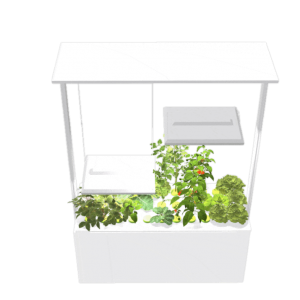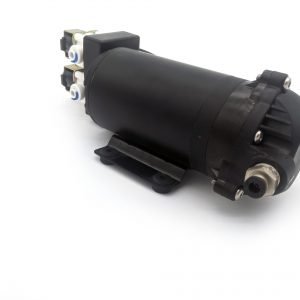
There’s no greater feeling in life than growing your own produce. It doesn’t only provide you with fresh and natural food, but proves beneficial for the environment as well.
That’s all the more reason for you to consider aeroponics. It’s a modern farming solution that allows you to harvest crops at any time throughout the year from the comfort of your home.
And the best part? You don’t have to necessarily purchase an expensive ready-made aeroponic system. You can build one yourself.
Not sure how to do that?
Well, that’s the part where we come in.
In this article, we’ll discuss which tools you need to build a fully-functional aeroponic system.
Tools You’ll Need to Build an Aeroponic System
- Reservoir to hold the nutrient solution/water
- Pumps to push large volumes of water
- Tubes to distribute water from the reservoir to the sprinkler heads
- Chamber to allow plant roots to spread
- Sprinkler heads to spray nutrient solution
- Timer to turn the pump on/off
Although it may seem overwhelming at first, all these components can be easily purchased from your local gardening store.
How Does an Aeroponic System Work?
Understanding how aeroponics works is fairly easy, provided you know the basics.
In an aeroponic system, plants are suspended mid-air, so they receive as much oxygen as possible. This helps them grow faster, which would not have been the case had you placed the plants in soil.
Also, since there’s no zone for plants to anchor in, you’ll have to keep them upright manually, using some kind of support. But make sure it keeps the root rigid yet flexible, considering they need room to grow.
Next, focus on the pump and sprinkler system, responsible for creating nutrient-rich vapor or mist, which is then sprayed onto the plant roots. This provides them with exactly the amount of moisture they need to grow.
As for the timer, it tells you the duration between each spray interval. You can decide that, depending on how much water each plant in your aeroponic garden needs.
Each tool in an aeroponic system has a role to play, and they’re all working towards one thing: to help plants grow in an ideal environment. At any point, if you’d like to see the growth process of your plants, check the growing chamber.
Types Of Aeroponic Systems
- Low-Pressure Aeroponics (LPA)
Low-pressure aeroponics (LPA) is the most common type of aeroponic system used by growers. And it’s most likely because LPA is easy to set up and can be found conveniently in local gardening shops.
So, if you’re going to build LPA, remember to buy a strong pump that can quickly move water to the sprinkler heads.
- High-Pressure Aeroponics (HPA)
Used mainly by well-established production companies, high-pressure aeroponics (HPA) is expensive and challenging to set up. Therefore, we wouldn’t recommend this system to home growers, especially if it’s the first time you’re implementing the modern farming solution.
The technology in HPA can atomize water into tiny droplets of 50 microns or less, making it the most efficient aeroponic system.
Ultrasonic Fogger Aeroponics
Also called fogponics, ultrasonic fogger aeroponics atomizes water into fog (10 microns or less). Although plants are better able to absorb these tiny droplets of water, they may not receive as much moisture.
Therefore, it’s best to use an ultrasonic fogger aeroponic system for seedlings, green vegs, and herbs.
Build Your Own Aeroponic System Today
Hopefully, now you possess enough information about how to build your own aeroponic system. Before doing so, remember to keep your specific requirements in mind, such as the plants you’ll be growing and the space you’ll be utilizing. Once you’ve figured that out, the next step is to buy the relevant tools from Auraponics. We’ve got an array of DIY gardening kits that will make the building process simpler and easier.





